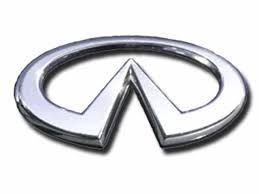EX35 AWD V6-3.5L (VQ35HR) (2009)
/Page-1501005.png)
CUSTOMER INTERVIEW
Interview the customer if possible, to determine the conditions that exist when the noise occurs. Use the Diagnostic Worksheet during the interview to
document the facts and conditions when the noise occurs and any of customer's comments; refer to See: Keyless Entry/Testing and
Inspection/Symptom Related Diagnostic Procedures/Squeak and Rattle Trouble Diagnosis. This information is necessary to duplicate the conditions
that exist when the noise occurs.
-
The customer may not be able to provide a detailed description or the location of the noise. Attempt to obtain all the facts and conditions that exist
when the noise occurs (or does not occur).
-
If there is more than one noise in the vehicle, perform a diagnosis and repair the noise that the customer is concerned about. This can be
accomplished by performing a cruise test on the vehicle with the customer.
-
After identifying the type of noise, isolate the noise in terms of its characteristics. The noise characteristics are provided so the customer, service
adviser and technician are all speaking the same language when defining the noise.
-
Squeak - (Like tennis shoes on a clean floor)
Squeak characteristics include the light contact/fast movement/brought on by road conditions/hard surfaces
= higher pitch noise/softer surfaces = lower pitch noises/edge to surface = chirping
-
Creak - (Like walking on an old wooden floor)
Creak characteristics include firm contact/slow movement/twisting with a rotational movement/pitch dependent on materials/often brought on by
activity.
-
Rattle - (Like shaking a baby rattle)
Rattle characteristics include the fast repeated contact/vibration or similar movement/loose parts/missing clip or fastener/incorrect clearance.
-
Knock - (Like a knock on a door)
Knock characteristics include hollow sounding/sometimes repeating/often brought on by driver action.
-
Tick - (Like a clock second hand)
Tick characteristics include gentle contacting of light materials/loose components/can be caused by driver action or road conditions.
-
Thump - (Heavy, muffled knock noise)
Thump characteristics include softer knock/dead sound often brought on by activity.
-
Buzz - (Like a bumblebee)
Buzz characteristics include high frequency rattle/firm contact.
-
Often the degree of acceptable noise level will vary depending up on the person. A noise that a technician may judge as acceptable may be very
irritating to the customer.
-
Weather conditions, especially humidity and temperature, may have a great effect on noise level.
DUPLICATE THE NOISE AND TEST DRIVE
If possible, drive the vehicle with the customer until the noise is duplicated. Note any additional information on the Diagnostic Worksheet regarding
the conditions or location of the noise. This information can be used to duplicate the same conditions when the repair is reconfirmed.
If the noise can be duplicated easily during the test drive, to help identify the source of the noise, try to duplicate the noise with the vehicle stopped by
doing one or all of the following:
1) Close a door.
2) Tap or push/pull around the area where the noise appears to be coming from.
3) Rev the engine.
4) Use a floor jack to recreate vehicle "twist".
5) At idle, apply engine load (electrical load, half-clutch on M/T models, drive position on A/T models).
6) Raise the vehicle on a hoist and hit a tire with a rubber hammer.
-
Drive the vehicle and attempt to duplicate the conditions the customer states exist when the noise occurs.
-
If it is difficult to duplicate the noise, drive the vehicle slowly on an undulating or rough road to stress the vehicle body.
CHECK RELATED SERVICE BULLETINS
After verifying the customer concern or symptom, check ASSIST for Technical Service Bulletins (TSBs) related to that concern or symptom.
